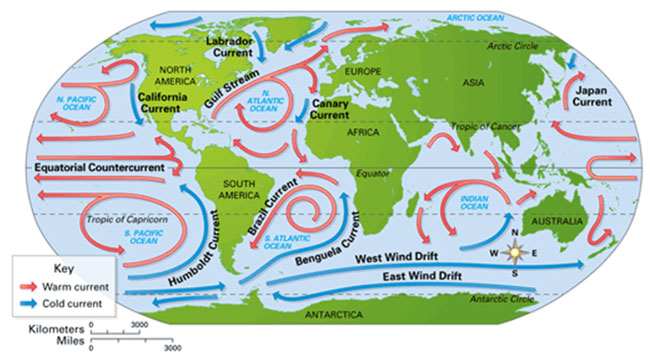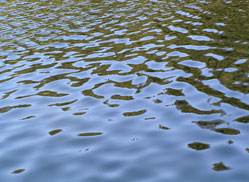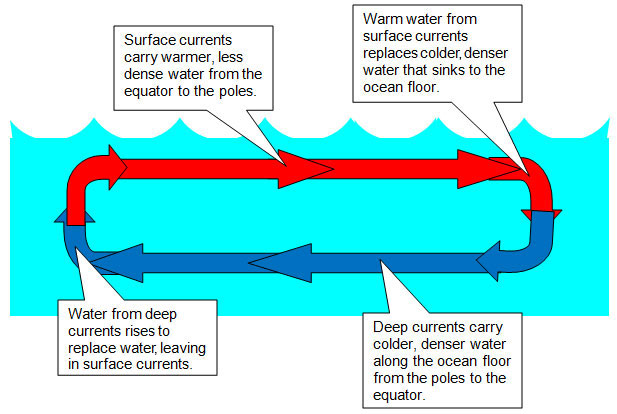
Source: Earth's Surface Winds, TERAA Environmental Research Institute

The Sun also provides the energy that drives convection in the ocean and produces ocean currents. There are two main types of ocean currents: surface currents and deep currents.
Surface currents are stream-like movements of water that occur at or near the surface of the ocean. Surface currents flow in distinct patterns around the Earth. Surface currents are controlled by four factors: global winds, the Coriolis effect, continental deflections, and the water temperature.
Global Winds
Near the equator, the winds blow ocean water east to west, but closer to the poles, ocean water is blown west to east.
Coriolis Effect
Just as with winds, the rotation of the Earth causes surface currents to move in curved paths rather than straight lines. Because of the Coriolis effect, currents in the Northern Hemisphere turn clockwise while currents in the Southern Hemisphere turn counterclockwise.
Continental Deflections
If Earth's surface were covered only with water, currents would travel in a fixed pattern across the Earth, but Earth’s surface is not covered only with water. When currents meet landforms, they change direction.
Water Temperature
Warm water currents begin near the equator and carry warm water to other parts of the ocean. Cold water currents begin closer to the poles and carry cool water to other parts of the ocean. The map below shows the Earth's surface currents. Warm water currents are shown in red, and cold water currents are shown in blue.

Source: Earth's Surface Winds, TERAA Environmental Research Institute
Deep currents are stream-like movements of ocean water far below the ocean surface. Deep currents are not controlled by wind or the Coriolis effect. Deep currents are mainly controlled by increases in water density.
Temperature and salinity affect the density of ocean water. Ocean water gets denser when it becomes saltier or gets colder. Cold air chills the water molecules at the surface, causing them to move closer together. As a result, the volume of the water decreases, and the water becomes denser. Starting at a depth of about 200 meters, the water temperature becomes colder as the depth increases. The denser water moves along the ocean floor and eventually travels toward the equator in the form of a deep current. Less-dense water always flows on top of denser water.
The diagram below shows how deep currents and surface currents interact and trade places.
